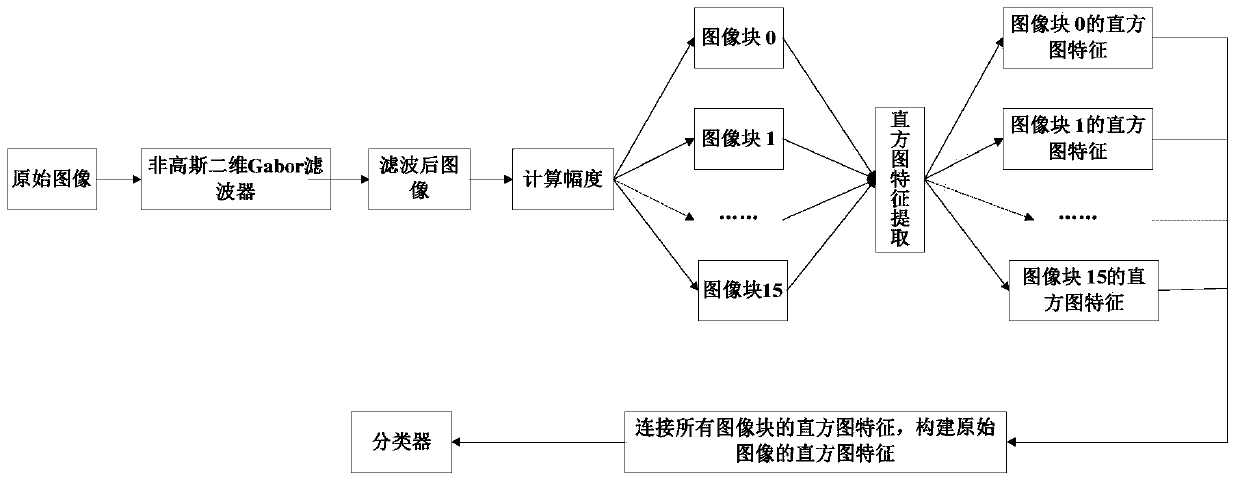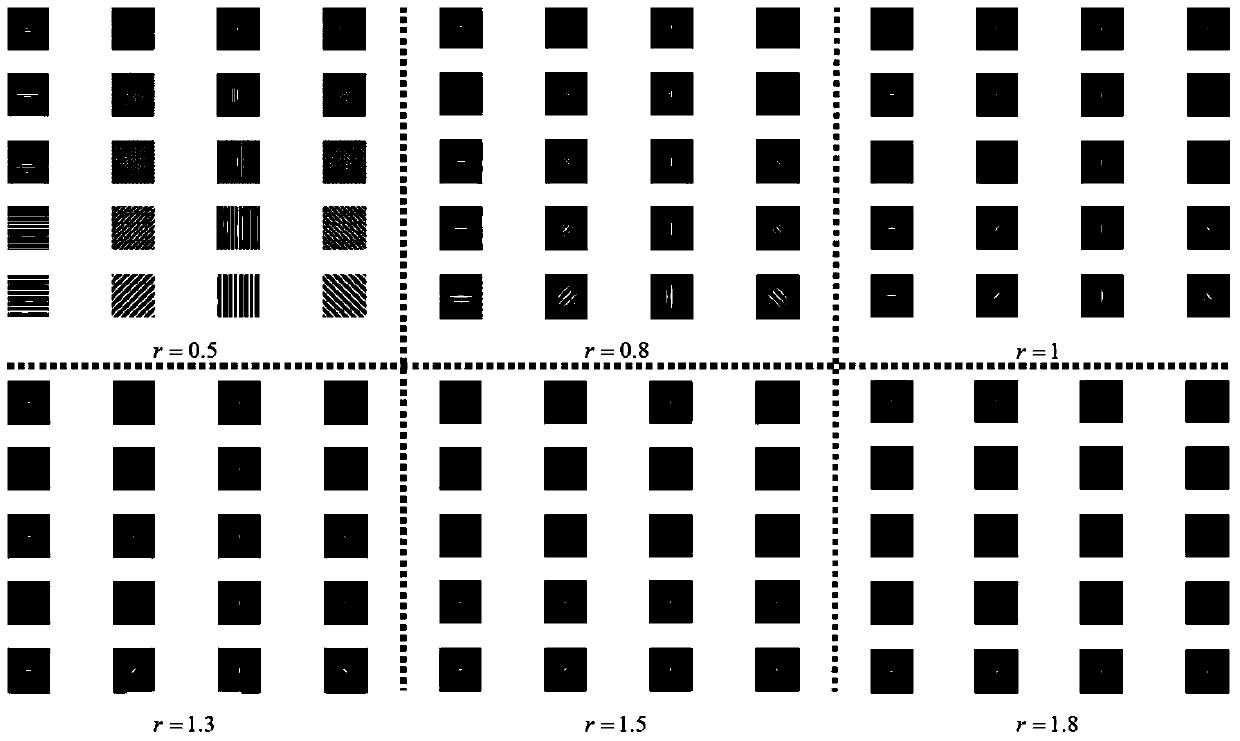Image texture extraction and identification method by non-Gauss two-dimension Gabor filter
A technology of image texture and recognition method, applied in the field of pattern recognition
- Summary
- Abstract
- Description
- Claims
- Application Information
AI Technical Summary
Problems solved by technology
Method used
Image
Examples
Embodiment 1
[0031] Embodiment 1: as Figure 1-4 As shown, the non-Gaussian two-dimensional Gabor filter image texture extraction and recognition method first constructs a non-Gaussian two-dimensional Gabor filter, then uses a non-Gaussian two-dimensional Gabor filter to filter the image, and calculates the amplitude of the filtered image matrix, and then divide this magnitude matrix into blocks, calculate the histogram feature vector of each block, and then connect the histogram feature vectors of each block to obtain the histogram feature vector of the original image. Finally, the feature vector is sent to the nearest neighbor classifier based on chi-square statistics for classification and identification.
[0032] The specific steps of the non-Gaussian two-dimensional Gabor filter image texture extraction and recognition method are as follows:
[0033] Step1, first construct a non-Gaussian two-dimensional Gabor filter; the non-Gaussian two-dimensional Gabor filter is constructed as:
...
Embodiment 2
[0045] Embodiment 2: as Figure 1-4 As shown, the non-Gaussian two-dimensional Gabor filter image texture extraction and recognition method first constructs a non-Gaussian two-dimensional Gabor filter, then uses a non-Gaussian two-dimensional Gabor filter to filter the image, and calculates the amplitude of the filtered image matrix, and then divide this magnitude matrix into blocks, calculate the histogram feature vector of each block, and then connect the histogram feature vectors of each block to obtain the histogram feature vector of the original image. Finally, the feature vector is sent to the nearest neighbor classifier based on chi-square statistics for classification and recognition.
[0046] The specific steps of the non-Gaussian two-dimensional Gabor filter image texture extraction and recognition method are as follows:
[0047] Step1, first construct a non-Gaussian two-dimensional Gabor filter; the non-Gaussian two-dimensional Gabor filter is constructed as:
[0...
Embodiment 3
[0062] Embodiment 3: as Figure 1-4 As shown, the non-Gaussian two-dimensional Gabor filter image texture extraction and recognition method first constructs a non-Gaussian two-dimensional Gabor filter, then uses a non-Gaussian two-dimensional Gabor filter to filter the image, and calculates the amplitude of the filtered image matrix, and then divide this magnitude matrix into blocks, calculate the histogram feature vector of each block, and then connect the histogram feature vectors of each block to obtain the histogram feature vector of the original image. Finally, the feature vector is sent to the nearest neighbor classifier based on chi-square statistics for classification and identification.
[0063] The specific steps of the non-Gaussian two-dimensional Gabor filter image texture extraction and recognition method are as follows:
[0064] Step1, first construct a non-Gaussian two-dimensional Gabor filter; the non-Gaussian two-dimensional Gabor filter is constructed as:
...
PUM
 Login to View More
Login to View More Abstract
Description
Claims
Application Information
 Login to View More
Login to View More - R&D
- Intellectual Property
- Life Sciences
- Materials
- Tech Scout
- Unparalleled Data Quality
- Higher Quality Content
- 60% Fewer Hallucinations
Browse by: Latest US Patents, China's latest patents, Technical Efficacy Thesaurus, Application Domain, Technology Topic, Popular Technical Reports.
© 2025 PatSnap. All rights reserved.Legal|Privacy policy|Modern Slavery Act Transparency Statement|Sitemap|About US| Contact US: help@patsnap.com



